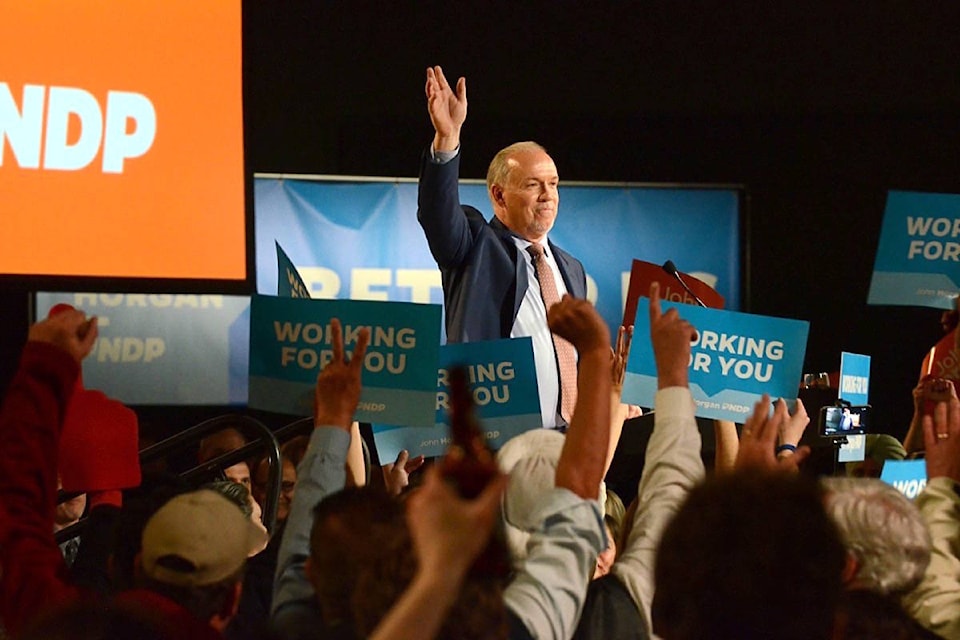One of my memorable moments of the 2017 election was reading a newspaper interview with a random voter during an NDP swing through Metro Vancouver.
What do you think of John Horgan, the woman was asked. She didn’t know who that was. What about your local candidates? She didn’t know who they were either. Didn’t need more details, she’d already voted NDP in the advance poll.

The NDP did well in Metro Vancouver, picking up six of nine Surrey seats and toppling three cabinet ministers. Jagrup Brar got his old seat back in Surrey-Fleetwood, easily knocking off Peter Fassbender, who narrowly defeated Brar in 2013 and went straight to firefighting cabinet posts, education and then municipal affairs and TransLink.
Voters who followed this campaign will know that the NDP promised to eliminate bridge tolls. If they got their information from TV, they may not know that this means the end of TI Corporation, the entity created to build the Port Mann bridge, collect the newly introduced tolls, and pay off the huge mortgage.
That debt would move onto the government books, and tax revenues would have to replace toll revenues over several decades. This would have implications for the province’s credit rating, currently AAA, and costs of other borrowing. But this is all too boring for TV.
TV loves the current minority split. It’s a thriller, a cliffhanger, a vote-them-off-the-island reality show. It’s a Cinderella story of the plucky Green Party humbling old-school politicians. It might be the May long weekend before we know for sure if we have a bare majority B.C. Liberal government, a Green-NDP coalition or a temporary peace treaty that could plunge us into another election at any time.
Brar’s initial term was notable for two things: his vast distribution of business cards and his participation in the “raise the rates” event staged annually by the East Vancouver poverty industry. Celebrities spend a month on single employable welfare, going to shelters and food banks, TV cameras in tow.
These are staged in high schools as well, where students blow the budget on expensive prepared foods because most aren’t familiar with cooking. Brar was roasted by the Indian community, where shared dwellings and cooking have raised frugal living to an art form.
For 2017, the NDP promised a cautious $100 increase in income assistance rates. Party veterans recall the crisis that helped destroy the last NDP government when it raised rates, and more crucially eased eligibility for free money. Soon one in 10 B.C. residents were collecting, the government staggering under the bulging caseload.
The B.C. Greens promised a reckless 50-per-cent increase across the board, followed by a minimum income system that essentially rewards idleness and docks people for earning more. It’s being piloted in Ontario, where UBC economist Kevin Milligan warns it’s mostly going to low-income young people still living with their parents.
Green Party leader Andrew Weaver got a pass on his dream-world spending plans, which included “free” universal child care and pre-school starting at age two. I asked him for his projection on welfare caseload. No answer.
Vancouver media spent a lot of time on personality stories, like that time when absent-minded professor Weaver walked into a door while texting and broke his nose.
The bulk of media coverage is what’s known as the “horse race.” Neck and neck, who’s got the momentum, and of course those opinion polls, which provide a dubious daily scoreboard to surround with colour commentary.
Ah, so that’s what democracy is. A sporting event.
Tom Fletcher is B.C. legislature reporter and columnist for Black Press. Email: tfletcher@blackpress.ca Twitter: @tomfletcherbc
